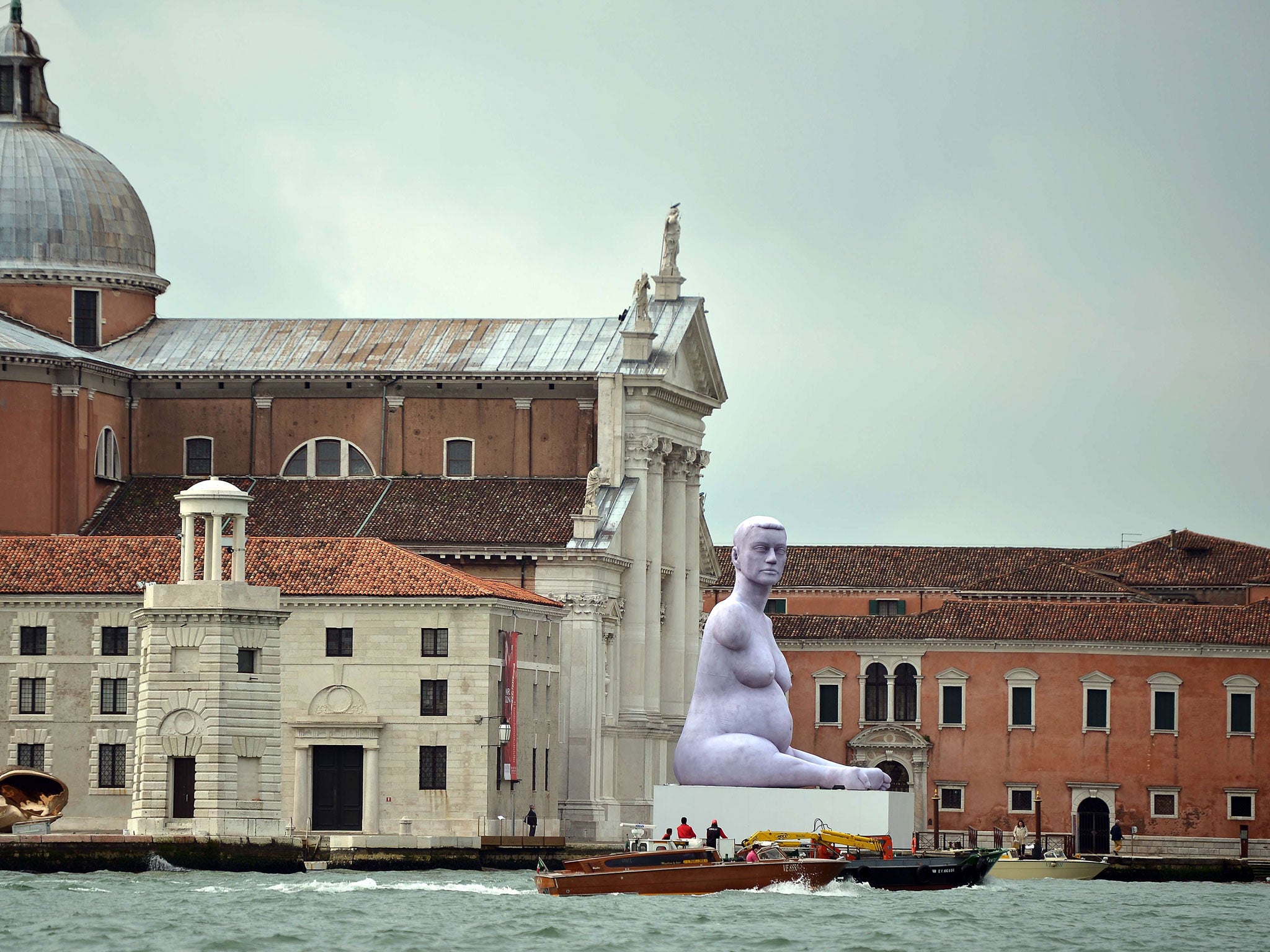Art review: Venice Biennale - From a gondola, Art UK looks fine and dandy, but is the YBA bubble about to burst?

Your support helps us to tell the story
From reproductive rights to climate change to Big Tech, The Independent is on the ground when the story is developing. Whether it's investigating the financials of Elon Musk's pro-Trump PAC or producing our latest documentary, 'The A Word', which shines a light on the American women fighting for reproductive rights, we know how important it is to parse out the facts from the messaging.
At such a critical moment in US history, we need reporters on the ground. Your donation allows us to keep sending journalists to speak to both sides of the story.
The Independent is trusted by Americans across the entire political spectrum. And unlike many other quality news outlets, we choose not to lock Americans out of our reporting and analysis with paywalls. We believe quality journalism should be available to everyone, paid for by those who can afford it.
Your support makes all the difference.Venice has always been a city for showing off, so it's been business as usual at the start of this year's art Biennale as some of the richest people in the world – including François Pinault, owner of Christie's, and Victor Pinchuk, the Ukrainian billionaire – open the doors of their palazzos and throw lavish parties for their friends.
The close proximity of such ostentatious wealth makes it all the more refreshing to see Jeremy Deller, the artist chosen to represent Britain at the Biennale, pack such a political punch. In his six-room exhibition in the British Pavilion, titled English Magic, the 2004 Turner Prize winner presents a show that wittily skewers the secretive practices that promote and protect such wealth and power.
Deller is an artist who works like a curator, here using other artists and the public to produce the jigsaw pieces of his narrative. In the first of three huge murals he shows the tax haven of Jersey being being burnt to the ground; another invokes the spirit of William Morris about to smash Roman Abramovich's yacht; a third mural conjures a giant bird of prey to crush a royal Range Rover in revenge for the killing of rare hen harriers at Sandringham.
In a set of drawings of the men who led Britain into the Iraq war, Deller presents Alastair Campbell and Tony Blair as if they were courtroom illustrations, given extra resonance by the fact that they are sketched by former soldiers now serving prison sentences.
Prepare for some ruffled feathers when this beautifully paced show tours the UK next year.
If the Biennale is a multi-ring circus, its big top is the central pavilion in the official showground, and its overspill in the Arsenale shipyard, both curated by Biennale director Massimiliano Gioni. Many British artists are included, but of particular note is Lynette Yiadom-Boakye, shortlisted for this year's Turner Prize. Here she presents new portraits of women, often in poses familiar from Degas and other masters. What lends them a dark sense of mystery is the revelation that these women are all imaginary.
Among the star exhibits in the Arsenale are works by non-artists, including my favourite – a collection of embroidered sheets by the Brazilian psychiatric patient Arthur Rosario listing all the things he would need to tell God on Judgement Day.
Away from the showground, there is a treat in store for fans of transcendent minimalist art created by two veteran practitioners. A retrospective at the Correr museum of work by Anthony Caro, 90 next year, is a reminder of what beauty he produced from simple planes of coloured metal. Bill Culbert represents New Zealand at the Biennale, but he is an honorary Brit, having trained in London and settled in the city. His installation of fluorescent lightworks in the church were Vivaldi taught music creates a dramatic dialogue with the architecture, an effect which delighted Tate director Nicholas Serota who opened the show.
The YBA tendency, always so suited to showing off, has a natural place in Venice. Sarah Lucas is exhibiting a shiny new set of bronze penises and breasts in the central pavilion, and Marc Quinn has an exhibition of more than 50 works on the island of San Giorgio Maggiore. But with repeated showings the impact of his Alison Lapper Pregnant – so memorable in Trafalgar Square in 2005 – is wearing thin. A monumental inflatable version installed on the lagoon is a prominent feature of this Biennale, but with the emergence of Deller's more political brand of art, the whole YBA bubble feels only a pinprick away from bursting.
To 24 Nov (www.labiennale.org)
Join our commenting forum
Join thought-provoking conversations, follow other Independent readers and see their replies
Comments